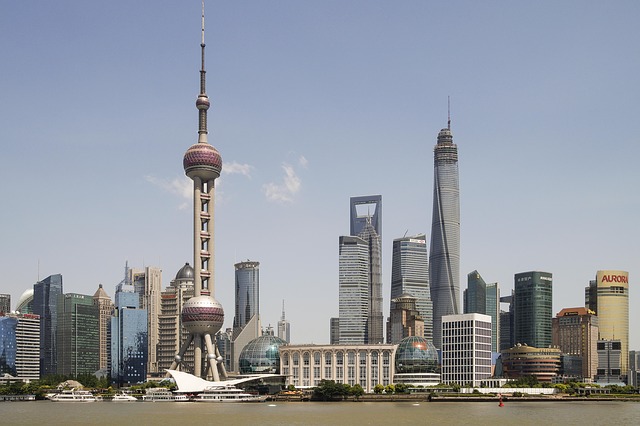Moody's Investors Service says that the shift in the mechanism for determining the daily fixing rate of the renminbi against the dollar is credit positive because it will increase currency flexibility and support steps to liberalize China's capital account.
On 11 August, the People's Bank of China announced that it would start basing the fixing rate of the renminbi against the dollar on the previous day's market prices.
In Moody's view, the most significant credit implication of this policy shift is that it constitutes progress along the path towards capital account liberalization.
On the other hand, the depreciation that followed the shift in the exchange regime does not have material credit implications because it will not significantly bolster export growth. In addition, China's strong external reserve position limits any negative credit impact from market volatility.
Moody's conclusions are contained in a just-released report, 'Government of China: Advance in Exchange Rate Reform is Credit Positive for the Sovereign.'
The report notes that the change in the exchange rate fixing mechanism may go some way towards addressing a concern the IMF has expressed in its ongoing assessment of whether to include the renminbi into its basket of currencies used to determine the Special Drawing Rights (SDR) rate.
Currently, four currencies--the dollar, the euro, pound sterling and the yen--are used to calculate the SDR.
The renminbi depreciated by about 3.5% against the dollar in the two days following the shift in the exchange rate regime. Moody's notes that there could be some further downward pressure on the exchange rate this year, but a sharp depreciation is unlikely.
According to Moody's, there are a number of fundamental factors that should support the exchange rate. These include a sizable current account surplus, and an estimated $3.7 trillion in official foreign exchange reserves. Moreover, the Chinese economy's net international assets are equivalent to 17% of GDP, and allow it to withstand some amount of exchange rate volatility.
According to Moody's, the magnitude of current RMB depreciation, which follows an 8.3% year-on-year fall in exports July, is not large enough to boost China's currency competitiveness against its trade competitors and partners.
Thus, the restoration of sustained, stronger export growth will likely depend on a more robust recovery in demand from the developed market economies than currency depreciation.



 China’s Growth Faces Structural Challenges Amid Doubts Over Data
China’s Growth Faces Structural Challenges Amid Doubts Over Data  Moldova Criticizes Russia Amid Transdniestria Energy Crisis
Moldova Criticizes Russia Amid Transdniestria Energy Crisis  US Futures Rise as Investors Eye Earnings, Inflation Data, and Wildfire Impacts
US Futures Rise as Investors Eye Earnings, Inflation Data, and Wildfire Impacts  2025 Market Outlook: Key January Events to Watch
2025 Market Outlook: Key January Events to Watch  Gold Prices Slide as Rate Cut Prospects Diminish; Copper Gains on China Stimulus Hopes
Gold Prices Slide as Rate Cut Prospects Diminish; Copper Gains on China Stimulus Hopes  Urban studies: Doing research when every city is different
Urban studies: Doing research when every city is different  UBS Predicts Potential Fed Rate Cut Amid Strong US Economic Data
UBS Predicts Potential Fed Rate Cut Amid Strong US Economic Data  Energy Sector Outlook 2025: AI's Role and Market Dynamics
Energy Sector Outlook 2025: AI's Role and Market Dynamics  Indonesia Surprises Markets with Interest Rate Cut Amid Currency Pressure
Indonesia Surprises Markets with Interest Rate Cut Amid Currency Pressure  Global Markets React to Strong U.S. Jobs Data and Rising Yields
Global Markets React to Strong U.S. Jobs Data and Rising Yields  U.S. Treasury Yields Expected to Decline Amid Cooling Economic Pressures
U.S. Treasury Yields Expected to Decline Amid Cooling Economic Pressures  S&P 500 Relies on Tech for Growth in Q4 2024, Says Barclays
S&P 500 Relies on Tech for Growth in Q4 2024, Says Barclays  U.S. Banks Report Strong Q4 Profits Amid Investment Banking Surge
U.S. Banks Report Strong Q4 Profits Amid Investment Banking Surge  Fed May Resume Rate Hikes: BofA Analysts Outline Key Scenarios
Fed May Resume Rate Hikes: BofA Analysts Outline Key Scenarios  China's Refining Industry Faces Major Shakeup Amid Challenges
China's Refining Industry Faces Major Shakeup Amid Challenges  U.S. Stocks vs. Bonds: Are Diverging Valuations Signaling a Shift?
U.S. Stocks vs. Bonds: Are Diverging Valuations Signaling a Shift?  Lithium Market Poised for Recovery Amid Supply Cuts and Rising Demand
Lithium Market Poised for Recovery Amid Supply Cuts and Rising Demand 































